Of the Baroreceptor reflex is initiated by the baroreceptors (also pressoreceptors) in the walls of the blood vessels and corresponds to an automatic reaction of the circulatory center to suddenly changed blood pressure values. In the event of a sudden drop in blood pressure due to blood loss, the reflex ensures the blood flow to the vital organs by centralizing the circulation. This is the case, for example, in the context of hypovolemic shock.
What is the baroreceptor reflex?

The baroreceptors are mechanoreceptors in the walls of the blood vessels. Mechanoreceptors are sensory cells that register pressure stimuli. The receptors in the wall of the blood vessels measure blood pressure, especially changes in blood pressure.
Like all receptors in the body, they convert stimuli into electrical excitation and translate them into the language of the nervous system. They send signals in the form of nerve excitation via afferent pathways to the central nervous system, from where changes in total peripheral resistance and cardiac output are initiated if necessary.
In this way, the baroreceptors mediate, among other things, the so-called baroreceptor reflex. Reflexes are automatic and voluntarily uncontrollable responses that the nervous system gives to certain stimuli. The beginning of a reflex arc is always a certain stimulus that stimulates the same response from the nervous system.
The baroreceptor reflex begins with a change in blood pressure, which is transmitted to the central nervous system by the baroreceptors in the form of a stimulus. This transmission of stimuli triggers an automated reaction to regulate the blood pressure values and thus maintain the circulation.
Function & task
Baro- or pressoreceptors are increasingly located in the carotid sinus and in the area of the aortic arch. The pressoreceptors located there are P-D receptors. These are potential-differential receptors that correspond to a combination of differential and proportional receptors. When a change in the stimulus is detected, PD receptors increase their action potential frequency and keep this frequency as long as the stimulus lasts. Like the differential receptor, they react to changes in stimuli.
Unlike differential receptors, however, they not only report the change in stimulus, but also signal the exact duration of the stimulus to the central nervous system, as also applies to proportional receptors. Only at the end of the stimulation does their action potential frequency drop below the resting value again.
The receptors in the vessel walls thus measure the absolute blood pressure, they register changes in the blood pressure and also perceive the speed of the change, whereby they are also able to register the blood pressure amplitude and the heart rate. They send these measurements via afferents to the circulatory center within the medulla oblongata.
The blood pressure is regulated in this center using the principle of negative feedback. When the blood pressure increases, the parasympathetic nerve is activated reflexively from here via the vagus nerve. This leads to a decrease in sympathetic activity. This process has a negative chronotropic effect on the heart. In the resistance vessels of the body periphery, the tone in the smooth vascular muscles changes.
If, on the other hand, the receptors register a decrease in blood pressure, the circulatory center inhibits the activity of the parasympathetic nervous system. This increases the activity of the sympathetic nervous system at the same time, since the two areas are antagonistic and regulate each other in this way. As a result of the falling parasympathetic tone and the increased sympathetic activity, the heart rate finally increases. The total peripheral resistance also increases as the smooth muscles of the resistance vessels are made to contract. In addition, there is an increased venous return flow.
Illnesses & ailments
The baroreceptor reflex, for example, plays a role in clinical practice in the context of hypovolemic shock in the event of major blood loss, which can lead to a sharp drop in blood pressure. The stretching of the aortic wall decreases during such an event, which causes the activity of the baroreceptors to decrease and thus allows them to send fewer signals to the medulla oblongata.
The neurons located there send increased signals to the heart muscle and to the individual veins and arteries without baroreceptor-mediated inhibition. In response, the heart rate accelerates and the heart leaks more blood accordingly. All of the arterioles and veins contract, allowing less blood to flow into the tissues. In the event of major blood loss, the blood is largely directed to the vital organs.
In the context of shock symptoms, the redistribution of the blood is mainly achieved through the release of adrenaline and is essentially mediated via beta-adrenergic receptors. In the case of hypovolemic shock, the normalization of the blood volume is the focus of the treatment so that the shock spiral is broken.
To normalize blood pressure, the patient is given infusion solutions via large peripheral accesses, which increase the volume in the vessels. Volume replacement is intended to compensate for hypovolemia, but must not lead to significant hypervolemia. For all major blood losses, causal treatment must also be given that focuses on stopping the bleeding.
In this context, the baroreceptor reflex is a shock symptom that ensures the blood supply to the vital organs and, for this purpose, holds back the blood from less important tissues. Since the "less important" tissues in the shock situation are no longer adequately supplied with oxygen and nutrients until the blood pressure has stabilized, individual tissues can become necrotic, i.e. die, due to a long-term shock condition. For this reason, rapid volume replacement is essential after major blood losses. As the blood pressure normalizes, the shock symptoms subside. From this point on, the vital blood reaches all tissues again. The volume replacement therefore serves to secure blood flow.

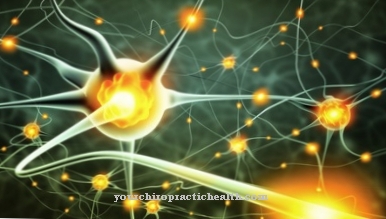
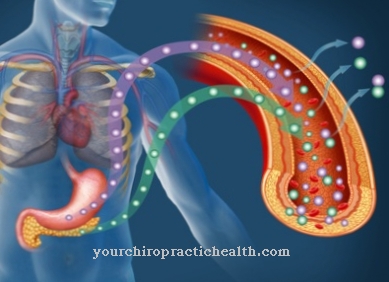
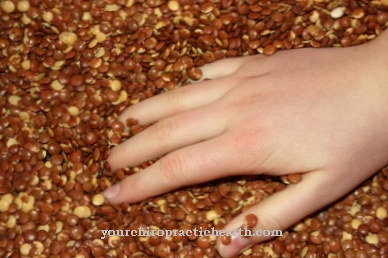

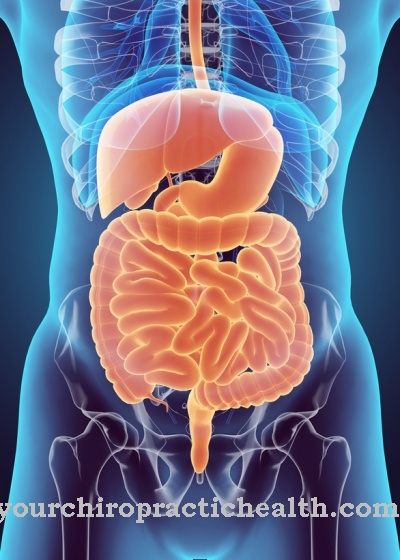
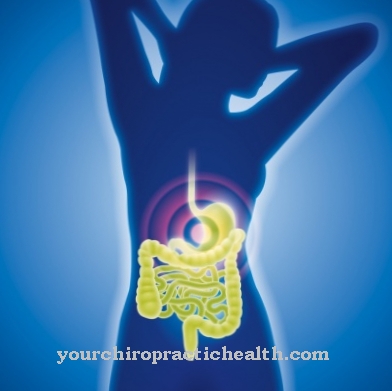

















.jpg)



